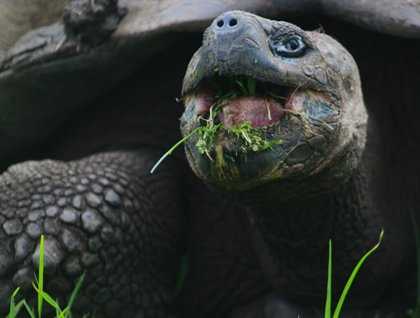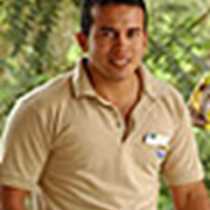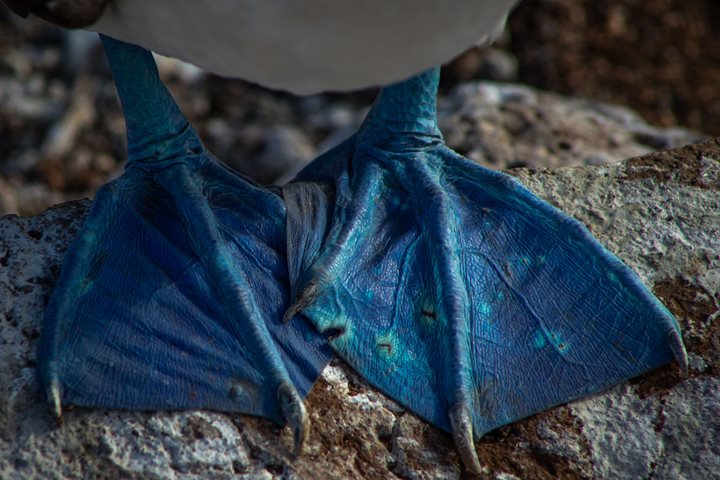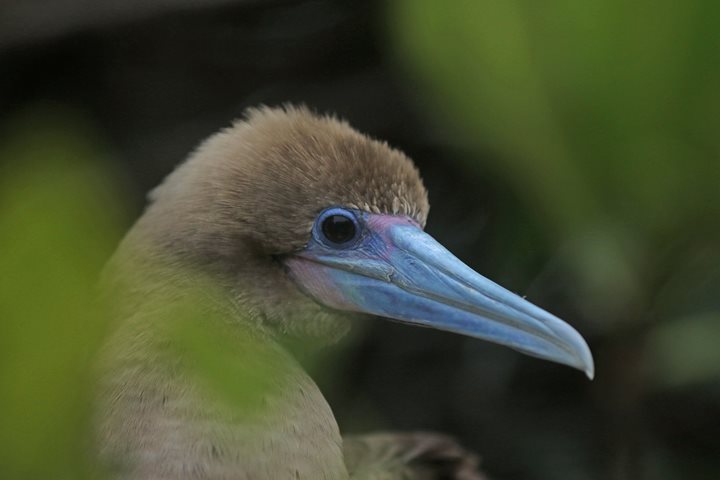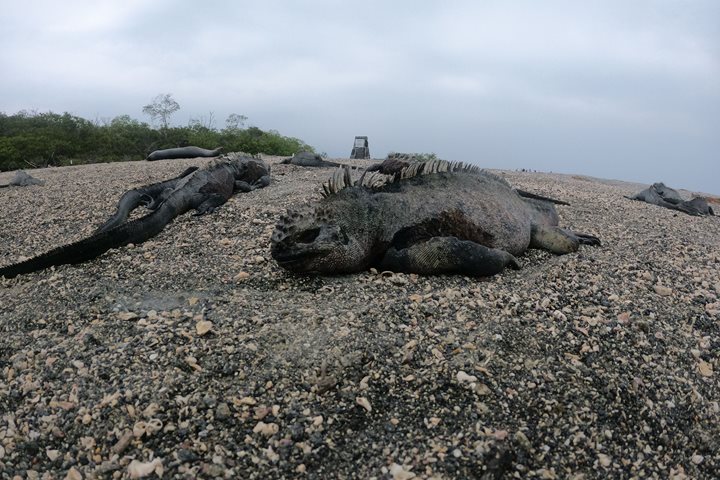We now have arrived to Santa Cruz Island, where the largest Galápagos town is located. Here, one can find the headquarters of the Galápagos National Park, as well as the facilities of the Charles Darwin Foundation. Since 1959 both institutions have been working on the conservation of the islands, now focusing on the giant tortoise population, which in the 1950s and 1960s had a dim future. As we walked further into the corrals at the Giant Tortoise Breeding Center, we were able to observe the two distinctive shell shapes of tortoise in the many individuals that are kept in the center, both the saddle-backed shape and the dome-type.
After visiting the Giant Tortoise Breeding Center we headed towards Puerto Ayora. In the town center we boarded buses and drove to the highlands of Santa Cruz for a visit to a local, family-run sugarcane and coffee farm that was established in the late 1940s. Here, we learned about the sugarcane farming, processing alcohol out of the sugar cane juice, and even making sugar out of it. We were delighted to try some fresh and homemade Galápagos coffee after learning about the process that it takes for a coffee bean to be harvested until it gets to the table.
After a delicious lunch at a family-owned restaurant, we jumped in our buses and drove further into the agricultural zone of Santa Cruz. Giant tortoises roam around this area freely and have chosen this vegetation zone as their habitat for millions of years. We walked along various paths, and we realized that almost the entire time we had at least two or three giant tortoises within sight, grazing on the grass or just resting within the muddy rainwater ponds. Most of the tortoises were huge males over 100 years old approximately and easily over 500 pounds each. We also had a chance to visit an underground lava tunnel, which added more excitement to our afternoon, since this is a very special one—and one of the few double decker lava tubes still intact. Such an astonishing place gives us the opportunity to learn about the geology of the island and its geological features remaining without our causing much impact.

